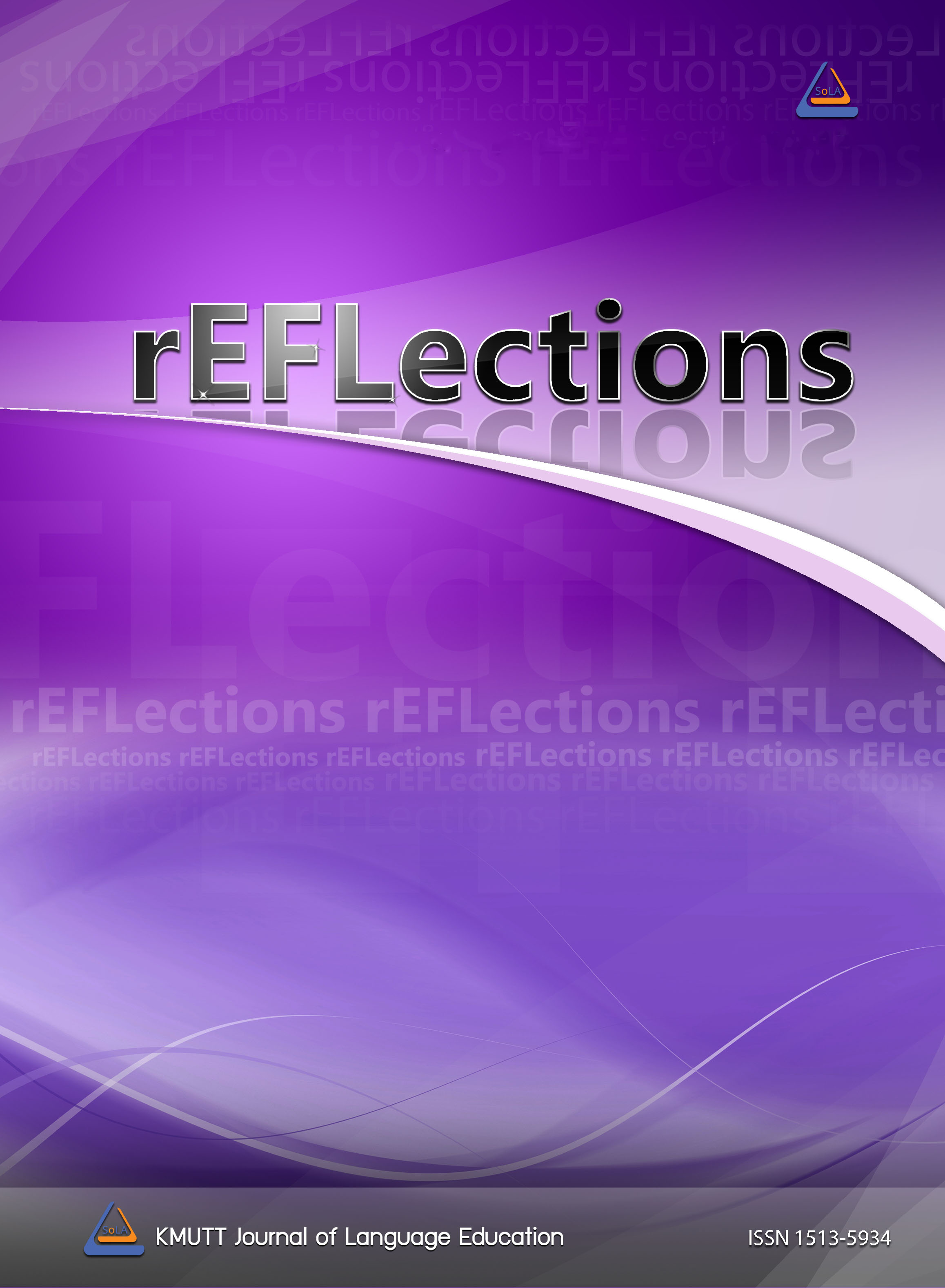ESL Students Use of Alliteration and Assonance in Recalling Formulaic Language
Main Article Content
Abstract
Formulaic language, such as lexical phrases as hot as hell or pass the buck, in English is common in daily usage. Although formulaic language is common, the lexical phrases are often excluded from word lists. Second language learners of English need to use formulaic language to enhance their proficiency level. Beyond incorporating lexical phrases to word lists, other methods should be examined. This study examined the mnemonic benefit of noticing alliterative and assonant phrases with low and high proficiency learners of English. Previous research has shown that highlighting the concepts of alliteration and assonance is beneficial in recalling monosyllabic two-word units such as pet peeve or bite size. This study inquired whether the mnemonic effect is effective with longer lexical phrases beyond two-syllable phrases even when deliberative learning is not involved. Students from two public universities in Japan participated in the semester-long activity. The participants were asked to classify the phrases into different categories, and then recall the phrases over time. The results indicate that the mnemonic effect is not as clear with longer lexical phrases than it is with monosyllabic lexical phrases. Recall for alliterative expressions seemed to be better than for assonant expressions, but similar to non-salient expressions. Lower proficiency learners seem to process the longer lexical phrases similar to higher proficiency learners so the benefit of noticing alliterative and assonant expressions might be equal for both groups.
Article Details
References
Biber, D., & Barbieri, F. (2007). Lexical bundles in university spoken and written registers. English for Specific Purposes, 26, 263–286.
Biber, D., Conrad, S., & Cortes, V. (2003). Lexical bundles in speech and writing: an initial taxonomy. In A. Wilson, P. Rayson & T. McEnery (Eds.), Corpus linguistics by the Lune: a festschrift for Geoffrey Leech (pp. 71–93). Frankfurt, Germany: Peter Lang.
Biber, D., Conrad, S., & Cortes, V. (2004). If you look at ...: Lexical bundles in university teaching and textbooks. Applied Linguistics, 25(3), 371–405.
Biber, D., Johansson, S., Leech, G., Conrad, S., & Finegan, E. (1999). The Longman grammar of spoken and written English. London, UK: Longman.
Boers, F., & Lindstromberg, S. (2005). Finding ways to make phrase-learning feasible: The mneumonic effect of alliteration. System, 33, 225–38.
Boers, F., & Lindstromberg, S. (2012). Experimental and intervention studies on formulaic sequences in a second language. Annual Review of Applied Linguistics, 32, 83-110.
Browne, C., Culligan, B. & Phillips, J. (2013). The New General Service List. Retrieved from http://www.newgeneralservicelist.org.
Conklin, K., & Schmitt, N. (2008). Formulaic sequences: Are they processed more quickly than nonformulaic language by native and nonnative speakers? Applied Linguistics, 29(1), 72–89.
Durrant, P., & Schmitt, N. (2009). To what extent do native and non-native writers make use of collocations? International Review of Applied Linguistics, 47, 157-177.
Eyckmans, J., Boers, F., & Lindstromberg, S. (2016). The impact of imposing processing strategies on L2 learners' deliberate study of lexical phrases. System, 56, 127–39.
Granger, S., & Bestgen, Y. (2014). The use of collocations by intermediate vs. advanced non-native writers: a bigram-based study. International Review of Applied Linguistics in Language Teaching, 52, 229-252.
Grant, L., & Bauer, L. (2004). Criteria for redefining idioms: Are we barking up the wrong tree? Applied Linguistics, 25(1), 38 - 61.
Horness, P. (2014). The beneficial mnemonic effect of alliteration and assonance in recalling lexical chunks. JACET-KANTO Journal, 2, 42-56.
Lindstromberg, S., & Boers, F. (2008a). The mnemonic effect of noticing alliteration in lexical chunks. Applied Linguistics 29, 200–222. doi: 10.1093/applin/amn007
Lindstromberg, S., & Boers, F. (2008b). Phonemic repetition and the learning of lexical chunks: The mnemonic power of assonance. System, 36, 423-36.
Millar, N. (2010). The processing of malformed formulaic language. Applied Linguistics, 32, 129-148.
Nation, I. S. P. (2007). The four strands. Innovation in Language Learning and Teaching, 1(1), 1-12.
Nation, I. S. P., & Webb, S. (2011). Researching and analyzing vocabulary. Boston, MA: Heinle Cengage Learning.
Schmitt, N. (2010). Researching vocabulary: A vocabulary research Manual. London, UK: Palgrave Macmillan.
Wood, D. (2010). Formulaic language and second language speech fluency. London, UK: Continuum International Publishing Group.
Wray, A. (2002). Formulaic language and the lexicon. Cambridge, UK: Cambridge University Press.
Wray, A. (2008). Formulaic Language: Pushing the Boundaries. Oxford, UK: Oxford University Press.


